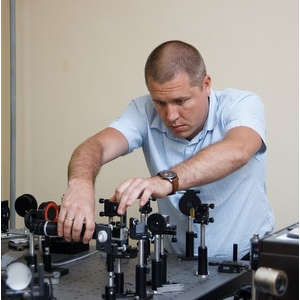A research center to develop “smart” agriculture technologies has been started at the Samara National Research University. Together with colleagues from scientific institutions in Moscow and Novocherkassk (Rostov Region), Samara scientists intend to offer digital “vision” systems for agricultural machinery based on the technologies originally developed for use in space to the domestic agricultural producers.
“Landing” space technologies to the soil of the domestic agricultural industry should increase the efficiency of raising crops, reduce the consumption of mineral fertilizers and increase the crop yield by about a quarter. Neural networks will automatically analyze the images obtained from “vision” systems of agricultural machinery. The project involves massive use of these systems on diverse types of agricultural machinery.
Initially, the technologies now proposed for use in agriculture were worked out by Samara scientists in the course of creating hyperspectral equipment for small spacecraft. Specialists of the Samara University Department of Technical Cybernetics have created a compact space hyperspectrometer for promising domestic satellites and, together with scientists from the Department of Supercomputers and General Informatics, have developed methods to process and classify hyperspectral images of the Earth's surface obtained from orbit.
These developments, which solve various problems of remote sensing of the Earth, were also proposed to be used in the interests of agriculture, since hyperspectral images yield a lot of information important for farmers, such as remotely determining soil moisture and the content of mineral substances, detecting the presence of diseases in plants and even the foci of insect pests.
“But we are faced with the fact that obtaining hyperspectral information from spacecraft cannot meet the needs of ‘precise’ agriculture immediately, since its processing takes quite some time. Therefore, it became necessary to develop ‘ground based’ hyperspectral sensors. Moreover, the set of requirements for them is significantly different from that for spacecraft hyperspectral equipment,” explained Nikolai Kazansky, Professor of the Department of Technical Cybernetics at Samara University. “In space hyperspectrometers, the main thing is to obtain the maximum possible optical characteristics, but for ground-based sensors this is far from being a priority task.”
To obtain information about the state of soil and plants, scientists propose using sensors that combine elements of flat optics with high microrelief, which can perform several different tasks. “For example, the combination of phase functions of a harmonic lens and a diffraction grating makes it possible to form an image and decompose it into a spectrum just one element,” explained Nikolai Kazansky. “Thus, a hyperspectral camera turns into an extremely simple device, comparable in complexity to a conventional video camera featuring our optics instead of a lens, which ‘decomposes’ information into a spectrum and forms an image simultaneously.”
“For example, we can equip a machine watering the crops with hyperspectral equipment. After all, a hyperspectral image enables you to see a lot of things that cannot be seen by human eye in either a regular black and white or color image. And the sensor will instantly determine whether the field needs to be watered or not. We plan to use less than 50 spectral channels in the 0.4–1.05 microns wavelength range for that task. This technology saves money for agricultural producers, and, in fact, we are creating ‘smart’ agriculture,” the scientist added. According to calculations of the researchers, the introduction of this irrigation technology alone will increase the yield of agricultural crops by about 25 %.
As part of the work, scientists will pay special attention to the technical design of sensors – it should be very simple and cheap enough for mass use in agricultural machinery. Hyperspectral sensors can be installed not only on ground vehicles, but on board drones as well, and that will enable immediate quick assessment of the state of large agricultural areas. Agreements on relevant tests have already been reached with the Samara State Agrarian University.
As a result of implementing the grant, planned for 4 years, scientists will develop algorithms to reconstruct and analyze the resulting hyperspectral images using deep learning methods of neural networks, in addition to the creation of structurally simple hyperspectral sensors for mass use in smart agriculture. “The scientific school of Viktor Soifer, Academician of the Russian Academy of Sciences, created and successfully operating at the University, will help us with this: the methods of recognition of hyperspectral information accumulated over decades will allow us to train the neural network so that it can analyze, for example, how much phosphorus is lacking in the soil – for artificial intelligence that will look as a dip at the wavelengths characteristic for phosphorus,” said Nikolai Kazansky.
For reference
Work on the creation of digital “vision” systems is being carried out within the framework of a grant from the Russian Science Foundation (RSF) “A system for monitoring agricultural indicators in visible, infrared and hyperspectral imaging modes.” The term of the project is four years, the project lead is Viktor Alexandrovich Soifer, Academician of the Russian Academy of Sciences. Scientists from the Samara University, the Institute of Image Processing Systems of the Russian Academy of Sciences (IIPS RAS), the Institute for Information Transmission Problems of the Russian Academy of Sciences (IITP RAS) and the Scientific Research Institute for Melioration Problems (RosNIIPM) take part in the studies.
The principles of operation of digital “vision” systems, their design features are set out in the scientific works of scientists of Samara University, published in 2020: https://www.mdpi.com/1424-8220/20/14/3914, https://www.mdpi.com/1424-8220/20/12/3411, https://www.mdpi.com/1424-8220/20/12/3416 in the Sensors Magazine. Sensors is the leading international publication for sensor science and technology. According to the Scimago Journal Rank, the magazine has a Q1 quartile for Instrumentation, a Q2 quartile for: Analytical Chemistry, Atomic and Molecular Physics, and Optics, Electrical and Electronic Engineering, Medicine.
